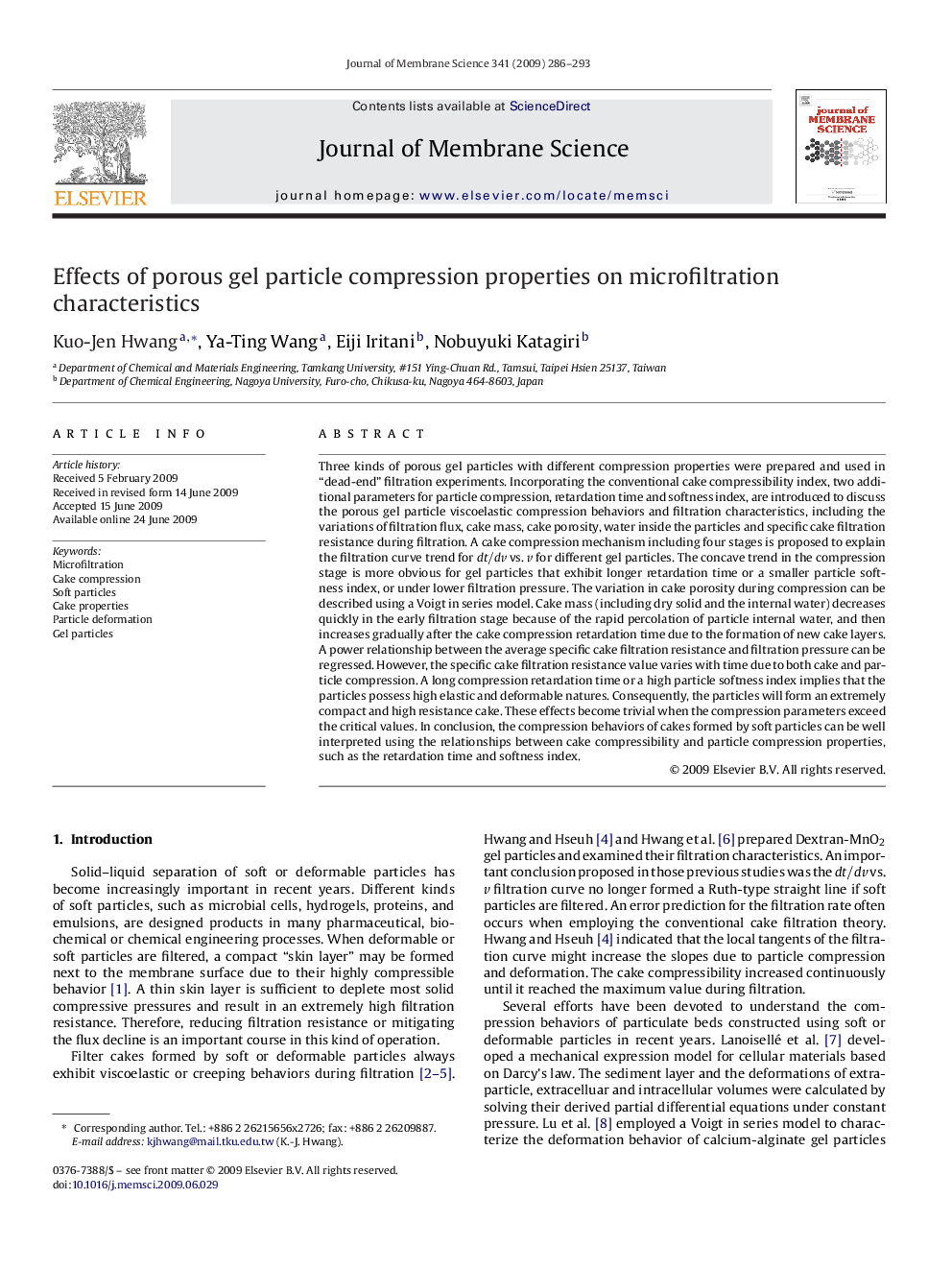| Article ID | Journal | Published Year | Pages | File Type |
|---|---|---|---|---|
| 636863 | Journal of Membrane Science | 2009 | 8 Pages |
Abstract
Three kinds of porous gel particles with different compression properties were prepared and used in “dead-end” filtration experiments. Incorporating the conventional cake compressibility index, two additional parameters for particle compression, retardation time and softness index, are introduced to discuss the porous gel particle viscoelastic compression behaviors and filtration characteristics, including the variations of filtration flux, cake mass, cake porosity, water inside the particles and specific cake filtration resistance during filtration. A cake compression mechanism including four stages is proposed to explain the filtration curve trend for dt/dv vs. v for different gel particles. The concave trend in the compression stage is more obvious for gel particles that exhibit longer retardation time or a smaller particle softness index, or under lower filtration pressure. The variation in cake porosity during compression can be described using a Voigt in series model. Cake mass (including dry solid and the internal water) decreases quickly in the early filtration stage because of the rapid percolation of particle internal water, and then increases gradually after the cake compression retardation time due to the formation of new cake layers. A power relationship between the average specific cake filtration resistance and filtration pressure can be regressed. However, the specific cake filtration resistance value varies with time due to both cake and particle compression. A long compression retardation time or a high particle softness index implies that the particles possess high elastic and deformable natures. Consequently, the particles will form an extremely compact and high resistance cake. These effects become trivial when the compression parameters exceed the critical values. In conclusion, the compression behaviors of cakes formed by soft particles can be well interpreted using the relationships between cake compressibility and particle compression properties, such as the retardation time and softness index.
Keywords
Related Topics
Physical Sciences and Engineering
Chemical Engineering
Filtration and Separation
Authors
Kuo-Jen Hwang, Ya-Ting Wang, Eiji Iritani, Nobuyuki Katagiri,
